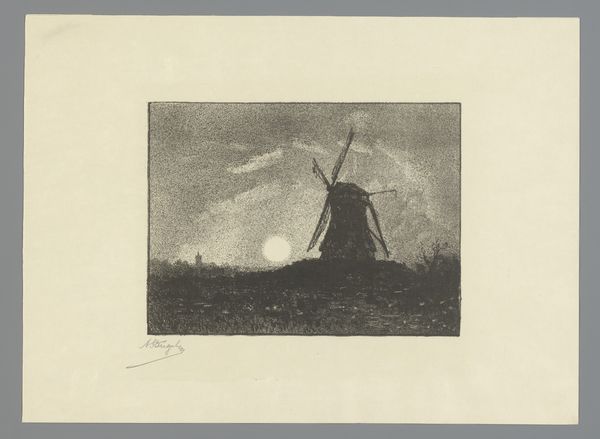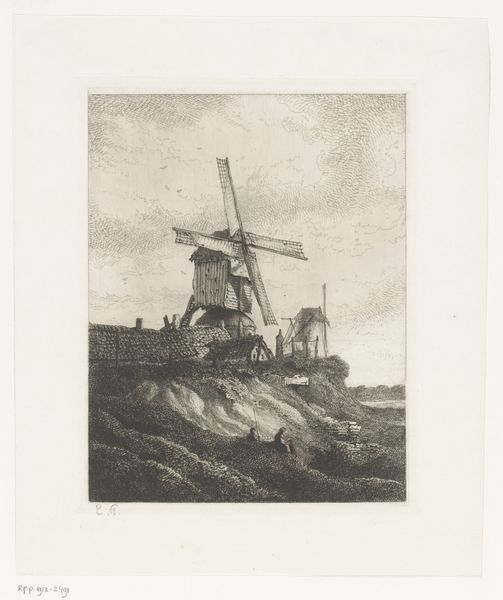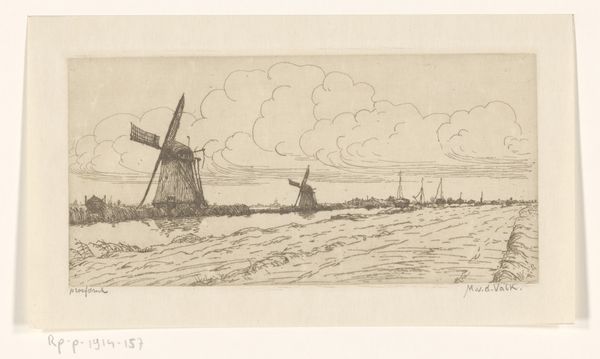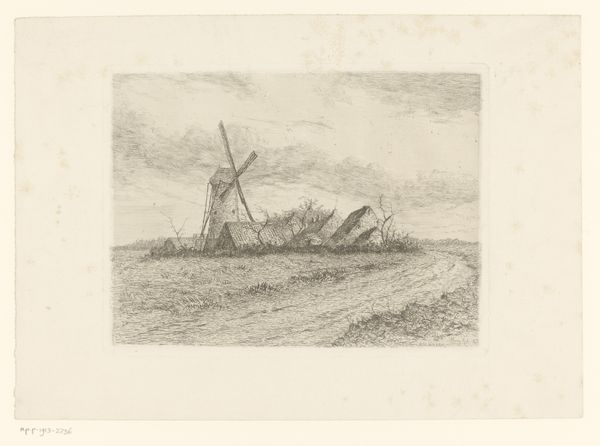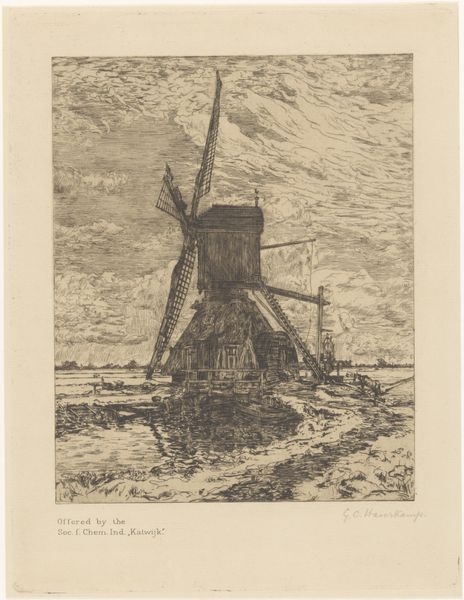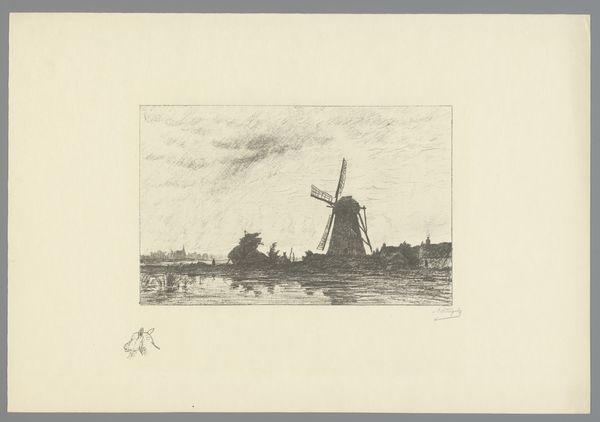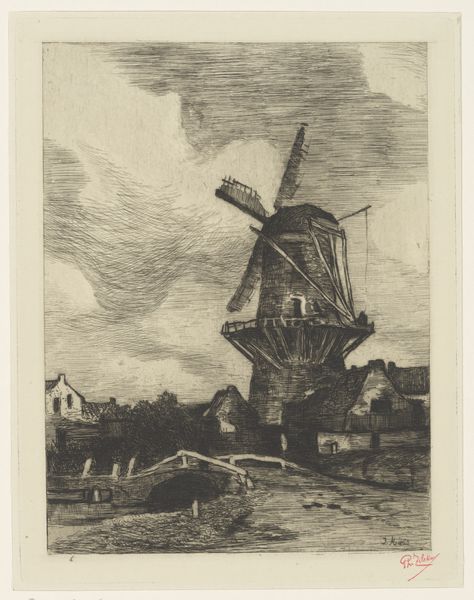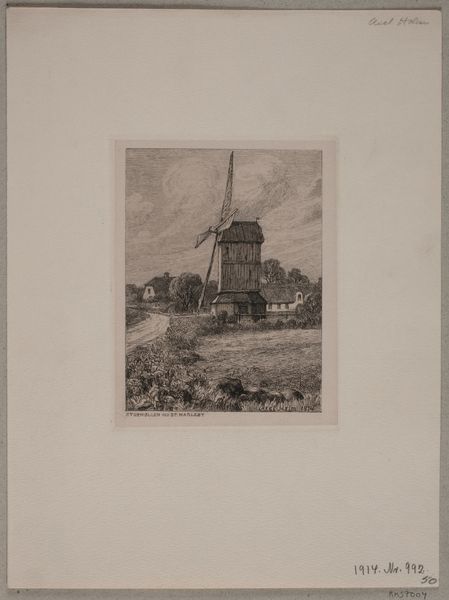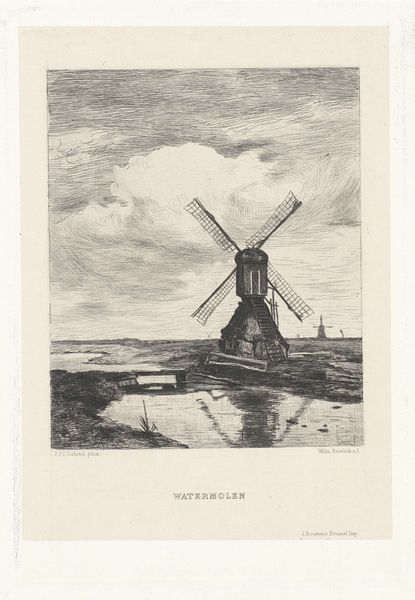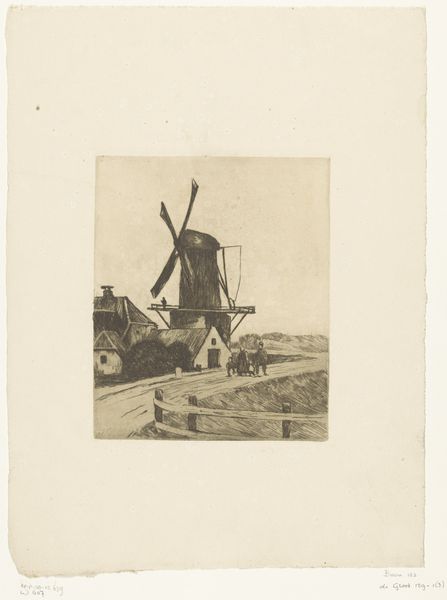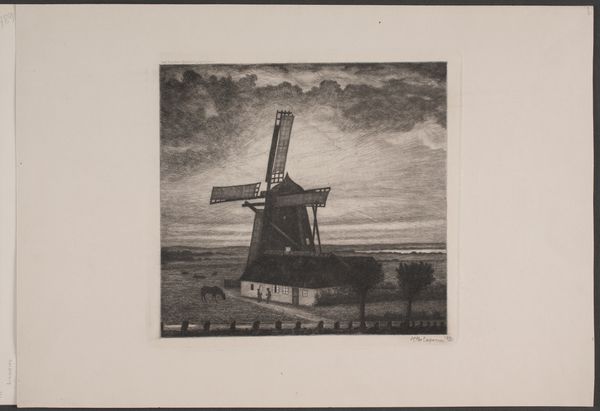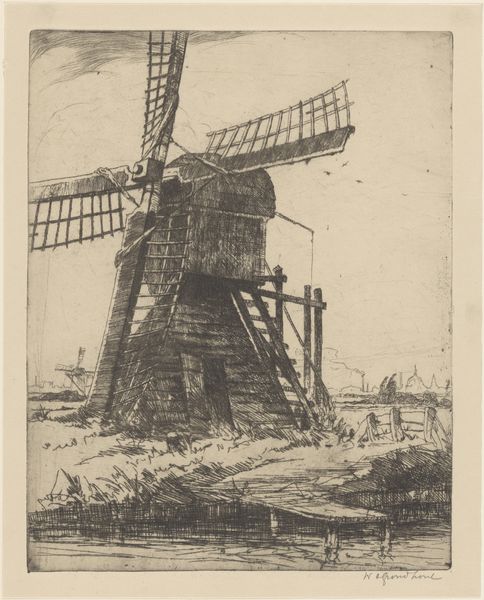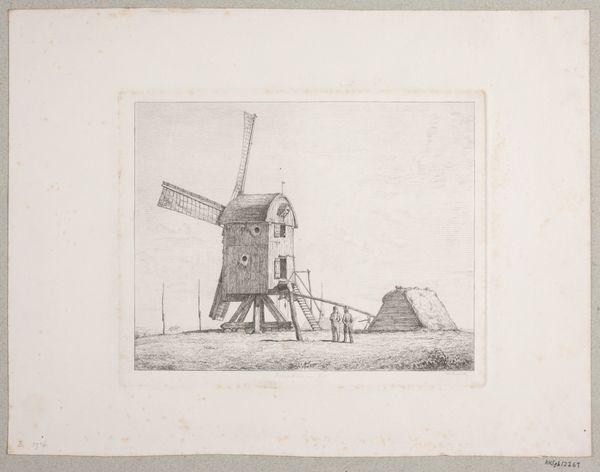
print, etching
#
dutch-golden-age
# print
#
etching
#
landscape
#
realism
Dimensions: height 449 mm, width 314 mm
Copyright: Rijks Museum: Open Domain
Curator: Alphonse Stengelin’s "Windmolen aan de rand van Beilen," which roughly translates to "Windmill on the outskirts of Beilen", is a compelling print rendered in etching, likely created between 1876 and 1910. It seems to pull from traditions rooted in Dutch Golden Age landscape painting, but also presents as quite a stark example of Realism. Editor: Oh, absolutely. When you first see it, this piece just exhales quiet solitude. It feels like a day spent under a very, very big sky with just the sound of that windmill creaking in the distance. Curator: And it situates itself right in a moment of incredible tension across rural Europe at this time. Agrarian societies were being heavily disrupted through mechanization. Editor: A perfect visual metaphor! Even here, we have figures both *on* the machine *and* working what appears to be surrounding farmland. It's like two worlds, ancient and "modern", coexisting uncomfortably on the same plane. The style also feels like the end of an era. The sky has no "romantic" clouds in it. There are just thousands of these tiny, precise markings that amount to something immense but tonally bleak. Curator: Right, that’s precisely what makes it feel aligned with realism, especially as a political or social lens, we can read a feeling of unease. Even the placement of the church’s spire behind the village hints at questions about the changing foundations of society in relation to modernization. Editor: In a strange way, it reminds me of a black-and-white photograph, except imbued with all this implied motion. Wind, work, time…it all swirls together in my mind when I look at it. The light seems both strong and weak, creating deep shadows even though it is a bright day. It's poetic in a strange, unassuming way. The mood settles somewhere between quaint and menacing. Curator: Precisely. The intersection of industry and community really sits in the foreground of this artist's study. I read it as a piece that demands viewers acknowledge evolving socioeconomic factors impacting Dutch society at the time. Thank you for bringing that additional atmospheric layer! Editor: No, thank *you*! You have me seeing how something like a "simple" landscape etching can open doors to complex and layered cultural meaning.
Comments
No comments
Be the first to comment and join the conversation on the ultimate creative platform.
